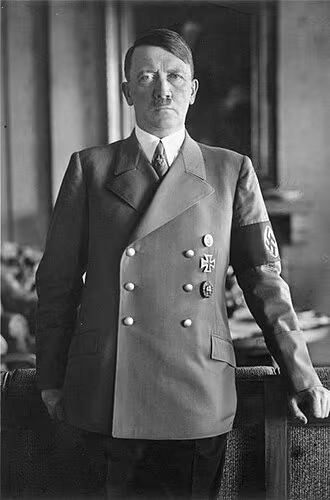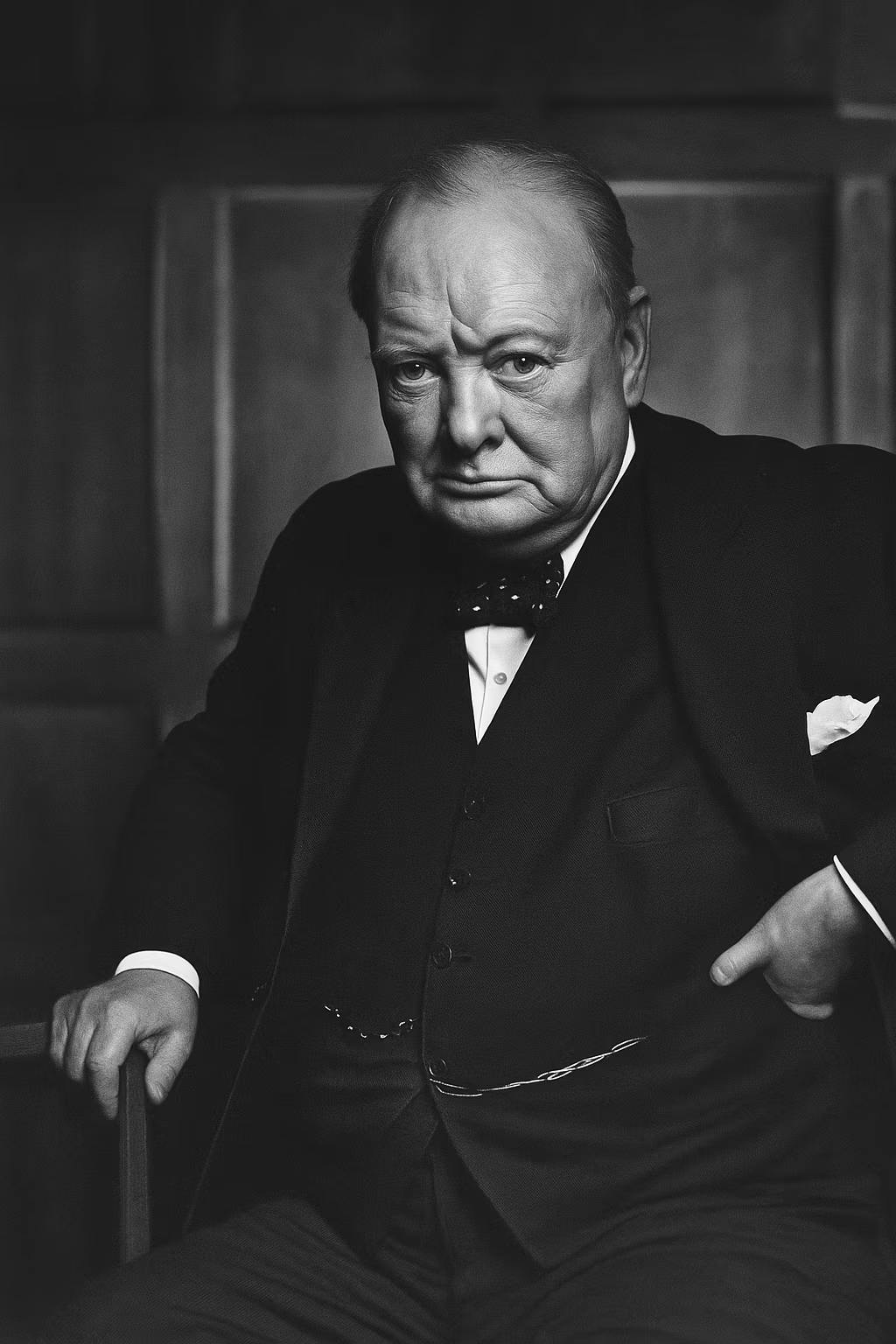Adolf Hitler (1889 – 1945)
Quick Summary
Adolf Hitler (1889 – 1945) was a politician and major figure in history. Born in Braunau am Inn, Austria-Hungary, Adolf Hitler left a lasting impact through Seized power and established a totalitarian dictatorship (1933–1945).

Birth
April 20, 1889 Braunau am Inn, Austria-Hungary
Death
April 30, 1945 Berlin, Germany
Nationality
German (Austrian-born)
Occupations
Complete Biography
Early Life
Adolf Hitler was born on April 20, 1889, in Braunau am Inn, a small Austrian border town. His father, Alois Hitler, was a customs official, and his mother, Klara Pölzl, was of peasant origin. After his father's death, he dropped out of school and moved to Vienna, where he lived in poverty. During his years in Vienna (1908–1913), he developed a deep resentment toward the Austro-Hungarian state, a belief in German nationalism, and virulent antisemitic ideas influenced by racist and nationalist propaganda then widespread in the city.
World War I
In 1913, Hitler moved to Munich and volunteered in the Bavarian army when World War I began in 1914. He served as a messenger on the Western Front and was wounded twice. He was awarded the Iron Cross for bravery, but his experience in the trenches left him with a sense of mission and a belief that Germany’s defeat had been caused by internal betrayal rather than military failure. This so-called 'stab-in-the-back' myth would later form the ideological basis for his hatred of socialists and Jews.
Rise To Power
After Germany’s defeat in 1918, Hitler joined the German Workers' Party, which he soon transformed into the National Socialist German Workers' Party (NSDAP). His oratorical skill, propaganda, and ability to channel public resentment gained him a large following. In 1923, he attempted a failed coup known as the Beer Hall Putsch in Munich. Imprisoned for treason, he wrote 'Mein Kampf', outlining his ideology: extreme nationalism, racial hierarchy, antisemitism, and the pursuit of Lebensraum (living space) for the German people. After his release, Hitler rebuilt the Nazi Party, exploiting economic turmoil and political instability to gain electoral success. Appointed Chancellor in January 1933, he rapidly consolidated power, abolished democracy, and established a totalitarian regime.
Dictatorship And War
Once in power, Hitler transformed Germany into a one-party state and began rearming the nation in violation of the Treaty of Versailles. His regime systematically persecuted Jews, political opponents, and minorities, institutionalizing racial laws and founding concentration camps. The invasion of Poland on September 1, 1939, triggered World War II. Hitler’s military campaigns brought much of Europe under Nazi control between 1939 and 1941, but his invasion of the Soviet Union in 1941 and declaration of war on the United States in December of that year marked strategic overreach. From 1942 onward, the war turned against Germany.
The Holocaust
Under Hitler’s leadership, the Nazi regime carried out the systematic extermination of six million Jews and millions of other victims, including Roma, disabled individuals, and political prisoners, in what became known as the Holocaust. This genocide, executed through industrialized killing in extermination camps such as Auschwitz and Treblinka, represents one of the greatest crimes in human history.
Collapse And Death
By 1945, Germany faced total defeat. Soviet forces entered Berlin in April. Facing inevitable loss, Hitler withdrew into his underground bunker (Führerbunker). On April 30, 1945, he committed suicide alongside Eva Braun. His death marked the end of the Nazi regime, which surrendered unconditionally days later. Posthumously, Hitler’s name became synonymous with totalitarianism, genocide, and the darkest chapter of the twentieth century.
Achievements and Legacy
Major Achievements
- Seized power and established a totalitarian dictatorship (1933–1945)
- Instigated World War II (1939–1945)
- Responsible for the Holocaust and mass atrocities
Historical Legacy
Hitler’s dictatorship brought unprecedented destruction and suffering. His racial ideology led to the Holocaust, and his war devastated Europe. Today, his name represents the embodiment of totalitarian evil, serving as a warning against fascism, racism, and political extremism.
Detailed Timeline
Major Events
Birth
Born in Braunau am Inn, Austria-Hungary
World War I
Served as a soldier on the Western Front
Beer Hall Putsch
Failed coup attempt in Munich
Chancellor
Appointed Chancellor of Germany
World War II
Invasion of Poland; start of World War II
Death
Committed suicide in Berlin bunker
Geographic Timeline
Famous Quotes
No quotations are provided due to the propagandistic nature of Hitler’s speeches.
External Links
Frequently Asked Questions
When was Adolf Hitler born and when did he die?
Born April 20, 1889; died April 30, 1945, in Berlin.
What was his role in World War II?
He led Nazi Germany and initiated the war through expansionist aggression.
What crimes was his regime responsible for?
The Holocaust and mass atrocities that caused the deaths of millions.
How did Hitler die?
He committed suicide in his bunker in Berlin as Allied forces closed in.
What is Hitler’s historical legacy?
He is remembered as a symbol of tyranny, genocide, and totalitarianism.
Sources and Bibliography
Primary Sources
- United States Holocaust Memorial Museum Archives
Secondary Sources
- Ian Kershaw, Hitler: 1889–1936 Hubris / 1936–1945 Nemesis ISBN: 9780141035888
- Joachim Fest, Hitler ISBN: 9780374529234
External References
See Also
Specialized Sites
Batailles de France
Discover battles related to this figure
Dynasties Legacy
Coming soonExplore royal and noble lineages
Timeline France
Coming soonVisualize events on the chronological timeline
